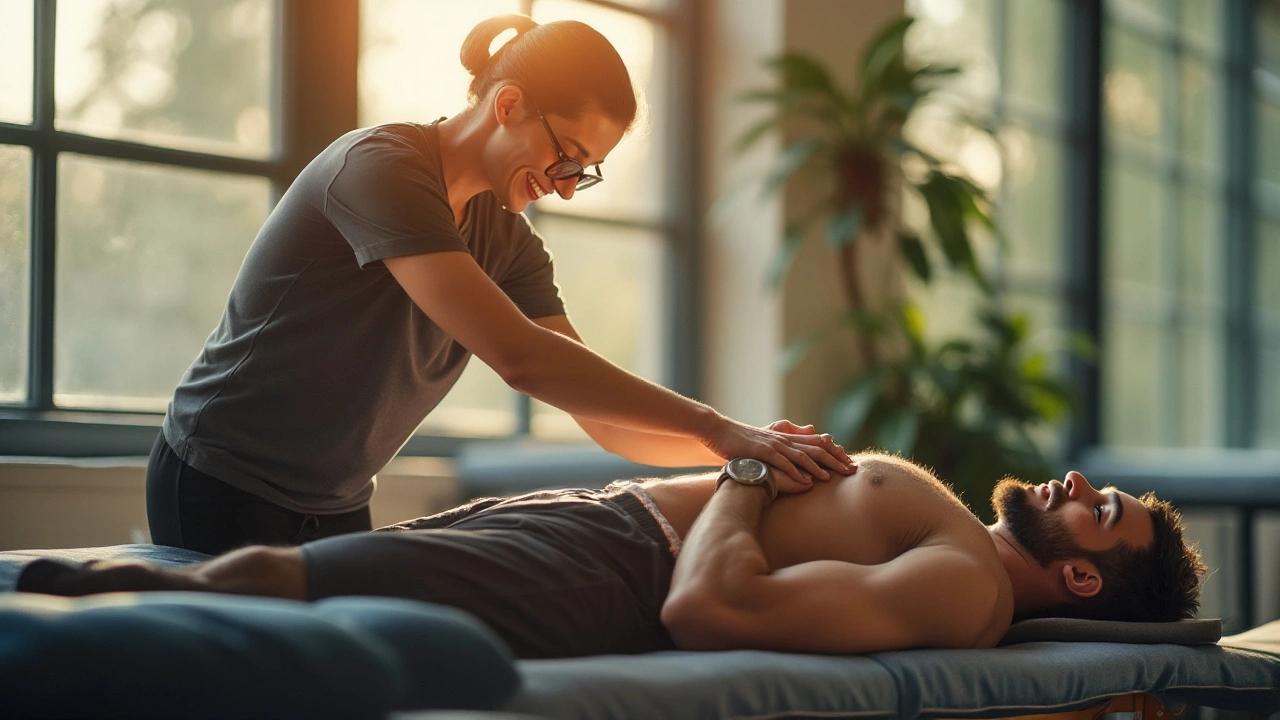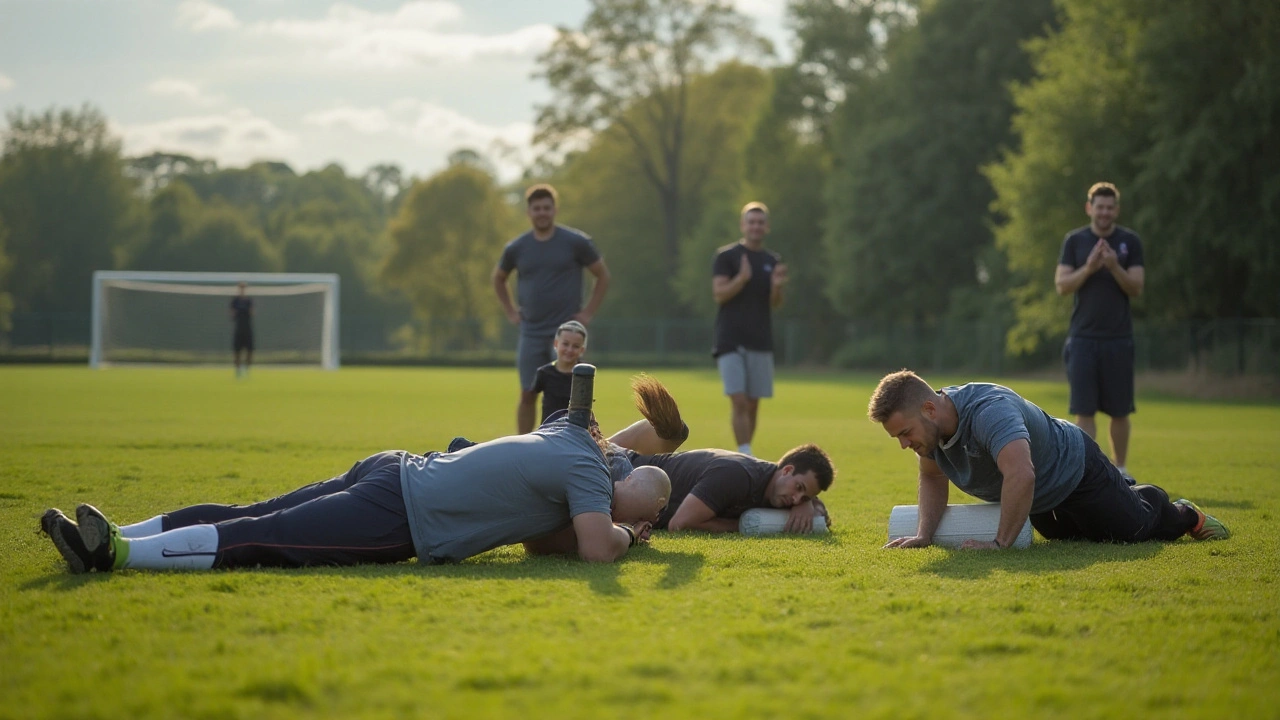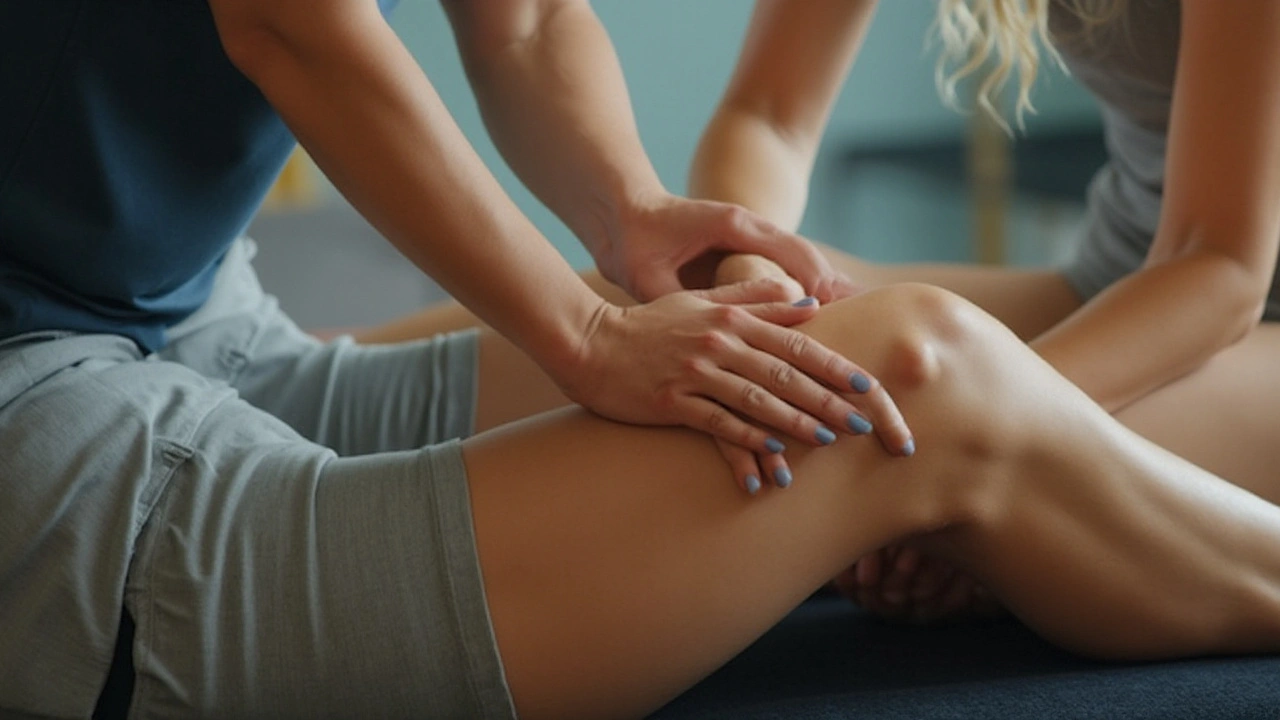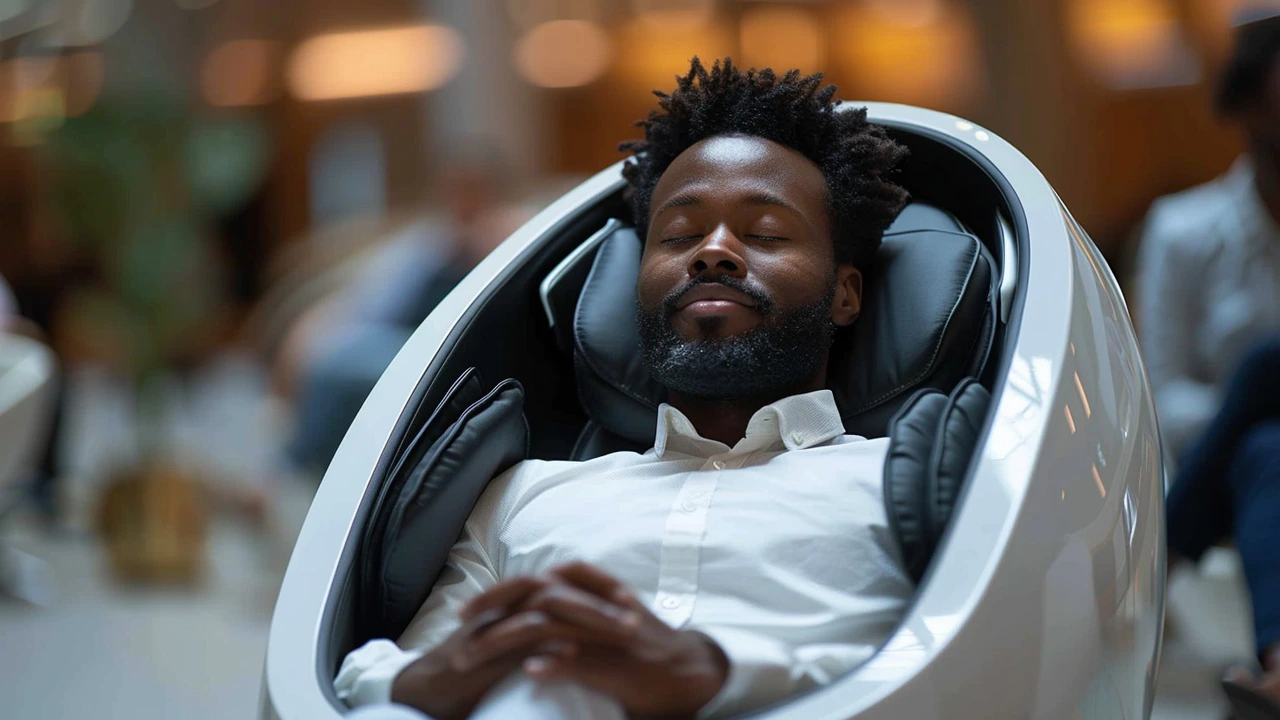Essential Guide to Sports Massage for Modern Athletes

For modern athletes striving to push the limits of their physical capabilities, recovery is as important as training. One of the most effective recovery methods is sports massage, a therapy that focuses on improving muscle function and decreasing the risk of injuries.
Sports massage involves a variety of techniques, each designed to address the unique needs of an athlete. From reducing muscle tension to enhancing flexibility, this type of massage can make a significant difference in performance.
In this article, we’ll explore the benefits of sports massage, discuss common techniques, and provide tips on how to get the most out of your sessions. By integrating sports massage into your training routine, you can optimize recovery, boost performance, and maintain peak physical condition.
- Introduction to Sports Massage
- Benefits for Athletes
- Common Techniques Used
- Tips for Getting the Best Results
- Integrating Sports Massage into Training
Introduction to Sports Massage
Sports massage is a specialized form of massage therapy tailored specifically for athletes. Unlike general massage techniques that focus on relaxation, sports massage targets areas most impacted by athletic activities, helping to improve energy levels and accelerate muscle recovery. As modern athletes continuously push their limits, integrating a sports massage routine can be the key to maintaining peak physical performance.
Originating from ancient Roman and Greek cultures, sports massage has evolved significantly. Today, it combines various techniques such as deep tissue massage, myofascial release, and trigger point therapy. These methods collectively aim to improve muscle flexibility, decrease muscle stiffness, and enhance overall performance. Studies have shown that sports massage can reduce delayed onset muscle soreness (DOMS) and improve range of motion, which are crucial for athletes.
"Massage therapy, particularly sports massage, is an essential component for athletes who are serious about their recovery and overall muscle health," says Dr. Michael Reinold, a renowned physical therapist and sports performance specialist.
An interesting fact about sports massage is that it isn't just for professional athletes. Anyone involved in regular physical activity can benefit from it. Sports massage can help in prevention and quick recovery from injuries, making it ideal for gymnastics, cycling, swimming, and even weekend warriors. Incorporating sports massage into a training regime can result in better performance and fewer days off due to injuries.
To get the best results, it's essential to understand what sports massage involves and how it can be integrated into your routine. Some athletes prefer getting a sports massage before an event to reduce muscle tension and enhance flexibility. Others opt for post-event massages to help flush out metabolic waste and reduce muscle fatigue. There's also maintenance massage, which helps in keeping soft tissue pliable and prepared for upcoming physical stress.
Modern sports massage therapists often use a combination of different techniques. One popular technique is effleurage, which involves long, sweeping strokes to warm up the muscles. This is usually followed by petrissage, kneading movements that enhance tissue flexibility and reduce muscle knots. Other techniques, such as friction and tapotement, can also be part of a sports massage session, each with specific benefits.
Understanding the science behind sports massage and its effects on the body is essential. The manipulation of soft tissues not only improves blood circulation but also increases the flow of lymphatic fluids, helping to remove toxins. This process reduces swelling and inflammation, crucial for faster recovery.
Benefits for Athletes
Sports massage offers numerous benefits that go beyond just relaxation. For athletes, the primary advantage is the enhancement of muscle recovery. When muscles are intensely used during training, tiny tears can occur. Sports massage helps by increasing blood circulation to these areas, providing the muscles with necessary nutrients to repair and thus recover faster.
Another crucial benefit is the reduction of injury risk. By alleviating muscle tension, sports massage can help in identifying and addressing tight or imbalanced muscle groups before they lead to injury. A well-balanced muscle environment reduces the chances of strains and sprains.
Improvement in flexibility and range of motion is also a notable benefit. Tight muscles can restrict movement and impact athletic performance. Regular sports massage sessions promote relaxation and lengthening of muscle fibers, enabling better flexibility and agility.
Additionally, athletes often experience reduced pain and soreness after a sports massage. The manipulation of soft tissues helps in releasing endorphins, the body's natural painkillers, which can alleviate discomfort and enhance mood. This mental aspect should not be overlooked as reduced stress and anxiety can significantly improve an athlete's focus and performance.
According to Dr. Jeffrey Spencer, a former Olympic athlete and sports scientist, "Sports massage is essential for maintaining peak athletic performance. It helps to keep muscles healthy, flexible, and ready for action."
Data also suggests that athletes incorporating sports massage into their routine experience faster recovery times. A study published in the Journal of Athletic Training indicated that sports massage could reduce delayed onset muscle soreness (DOMS) by up to 30%. This can be particularly beneficial during heavy training cycles when recovery time is crucial.
Finally, sports massage can also improve the quality of sleep. When muscles are relaxed and the body is less stressed, athletes tend to experience deeper and more restorative sleep, which is critical for overall health and optimal athletic performance. A well-rested athlete is more alert, stronger, and better prepared for both training and competition.

Common Techniques Used
When it comes to sports massage, several techniques are commonly employed to address the specific needs of athletes. Each technique has its own purpose and method, making the therapy versatile and effective. Understanding these techniques can help athletes appreciate what happens during a session and how it benefits their bodies.
One of the primary techniques is effleurage. This is a series of light, gliding strokes performed with the palm of the hand. Effleurage aims to warm up the muscles and prepare them for deeper work. It also helps increase circulation, which can aid in the removal of metabolic waste and reduce muscle soreness.
Petrissage involves kneading, wringing, and lifting the muscles. This technique targets the deeper layers of muscle tissue and helps in the relaxation and softening of tight muscles. Petrissage is beneficial for breaking down adhesions and improving the muscle's elasticity, making it a favorite among athletes who need flexibility and range of motion.
Tapotement is another interesting technique used in sports massage. It includes a rhythmic tapping or pounding of the muscles with the edge of the hands, fingers, or cupped hands. This method is great for stimulating blood flow to the muscles and awakening the nervous system. While it may look intense, it provides a refreshing and invigorating feeling.
Friction techniques are utilized to generate heat within the deeper muscle tissues. Small circular movements performed with the thumbs or fingertips break down scar tissue and adhesions. This is particularly useful after an injury or surgery, as it helps speed up the healing process and ensures better mobility in the affected area.
Another common technique is compression. This involves pressing down firmly on the muscle tissue using both hands. The aim is to increase blood flow and relieve muscle tension. Compression is often used in combination with other techniques like effleurage and petrissage for a holistic approach to muscle recovery.
Proprioceptive neuromuscular facilitation (PNF) stretching is a more advanced technique that combines passive stretching and isometric muscle contraction. PNF aims to enhance both active and passive range of motion to improve performance and aid in recovery. Many sports massage therapists incorporate PNF to prepare muscles for stretching and to reduce the risk of muscle strain.
"Sports massage techniques are designed to address the needs of athletes at every level, helping them to recover faster and perform better," says Dr. Jane Lucas, a licensed sports therapist with over 20 years of experience.
Understanding these techniques is crucial for athletes who are new to sports massage. Knowing what to expect can help in communicating with the therapist to tailor the session according to specific needs and goals. Each technique offers unique benefits, making sports massage a comprehensive solution for muscle recovery and enhanced performance.
Tips for Getting the Best Results
To really reap the benefits of sports massage, there are some key things to keep in mind. First and foremost, communication with your therapist is crucial. Let them know about your training routine, any injuries or sore spots, and what you hope to achieve with your massage sessions. They can then tailor the massage to meet your specific needs, which can enhance its effectiveness.
Hydration is another important aspect. Drinking water before and after your session can help flush out toxins released during the massage. It's a simple step that can make a big difference in how you feel post-massage. Aim to drink at least one to two glasses of water within an hour before and after your appointment.
Timing your massage strategically around your training schedule is also crucial. For instance, some athletes find that scheduling a deep tissue massage a day or two before a big event helps them perform better, while others prefer to get one after their event for quicker recovery. Pay attention to how your body responds and adjust accordingly.
Incorporating some self-care practices between professional massages can extend the benefits. Foam rolling, stretching, and even using massage balls on tight areas can help maintain muscle flexibility and reduce tension. You don't need special equipment for this—many athletes find that a simple tennis ball can work wonders on sore spots.
It's worth mentioning that consistency is key. Just like training, regular sports massages can yield better results than sporadic sessions. Try to establish a routine that suits your schedule and stick to it. This could be once a week, bi-weekly, or even monthly, depending on your training intensity and overall health.
Don't underestimate the power of relaxation. Stress and anxiety can take a toll on your body and your performance. Making time for relaxation techniques such as deep breathing, mindfulness, and, of course, sports massage, can improve not only your physical state but also your mental well-being.
Lastly, listen to your body. If you feel unbearable pain during a massage, speak up. Some discomfort is normal, especially when working on tight muscles, but it should never be excruciating. A respectable source once said, “Pain is not a sign of progress; listen to your body signals.” Your body has a unique way of communicating, and it's important to pay attention.
By following these tips and integrating sports massage into your training regimen, you can experience enhanced muscle recovery, increased sports performance, and an overall improved quality of life.

Integrating Sports Massage into Training
Integrating sports massage into your training regime can greatly enhance your athletic performance and overall physical health. Regular sessions give you the advantage of addressing muscle tightness, boosting flexibility, and accelerating recovery. For many athletes, consistency is the key. Scheduling massages alongside training sessions ensures that your body reaps the maximum benefits of both strenuous exercise and restorative therapy.
Athletes often have busy schedules, so finding the right time for a sports massage can be a challenge. Aim to incorporate it either after your most demanding workouts or during your rest days. Post-workout massages can help to minimize delayed onset muscle soreness (DOMS), making the day after an intense session much more bearable. On rest days, a massage can focus on working out residual tightness, allowing you to go into your next training session feeling fresh and ready to perform.
The frequency of sports massages depends on your level of activity and specific needs. While elite athletes might benefit from weekly sessions, recreational athletes might find bi-weekly or monthly massages sufficient. Long-term benefits include reduced injury risk, better muscle health, and a faster recovery process. To determine the appropriate frequency, you may need to experiment a bit or consult with a professional massage therapist specialized in sports therapy.
“Massage is not just a luxury; it's a way to a healthier, pain-free life.” - Unknown
Consider integrating different techniques to address various aspects of your training. For example, pre-event massages can stimulate the muscles and prepare the body for intense activity. These sessions are usually shorter and more focused on heating the muscles, enhancing circulation, and mentally preparing you for the high demands of your event. Post-event massages, on the other hand, are longer and focus on relaxing the muscles, reducing soreness, and helping the body transition into recovery mode.
Don't underestimate the power of communication with your massage therapist. Clearly explain your training schedule, any areas of discomfort, and your goals for the massage session. This will help the therapist tailor their techniques to your individual needs. The more they understand your requirements, the more effective the session can be. Being vocal about your pain threshold and comfort levels ensures that the massage is both beneficial and enjoyable.
Practical Steps for Integrating Sports Massage
- Analyze your training schedule and identify the most intense sessions.
- Plan your massage sessions around those key workouts and rest days.
- Opt for a mixture of pre-event and post-event massages to cover different needs.
- Communicate openly with your massage therapist about your needs and preferences.
- Experiment with the frequency and techniques to find what suits you best.
Integrating sports massage into your training routine is a dynamic process that requires some trial and error. By paying attention to your body's response and maintaining open communication with your therapist, you can unlock the full potential of this invaluable recovery tool. Whether you are an elite athlete or simply enjoy staying active, sports massage can help you hit new personal bests while keeping your body in optimal condition.





